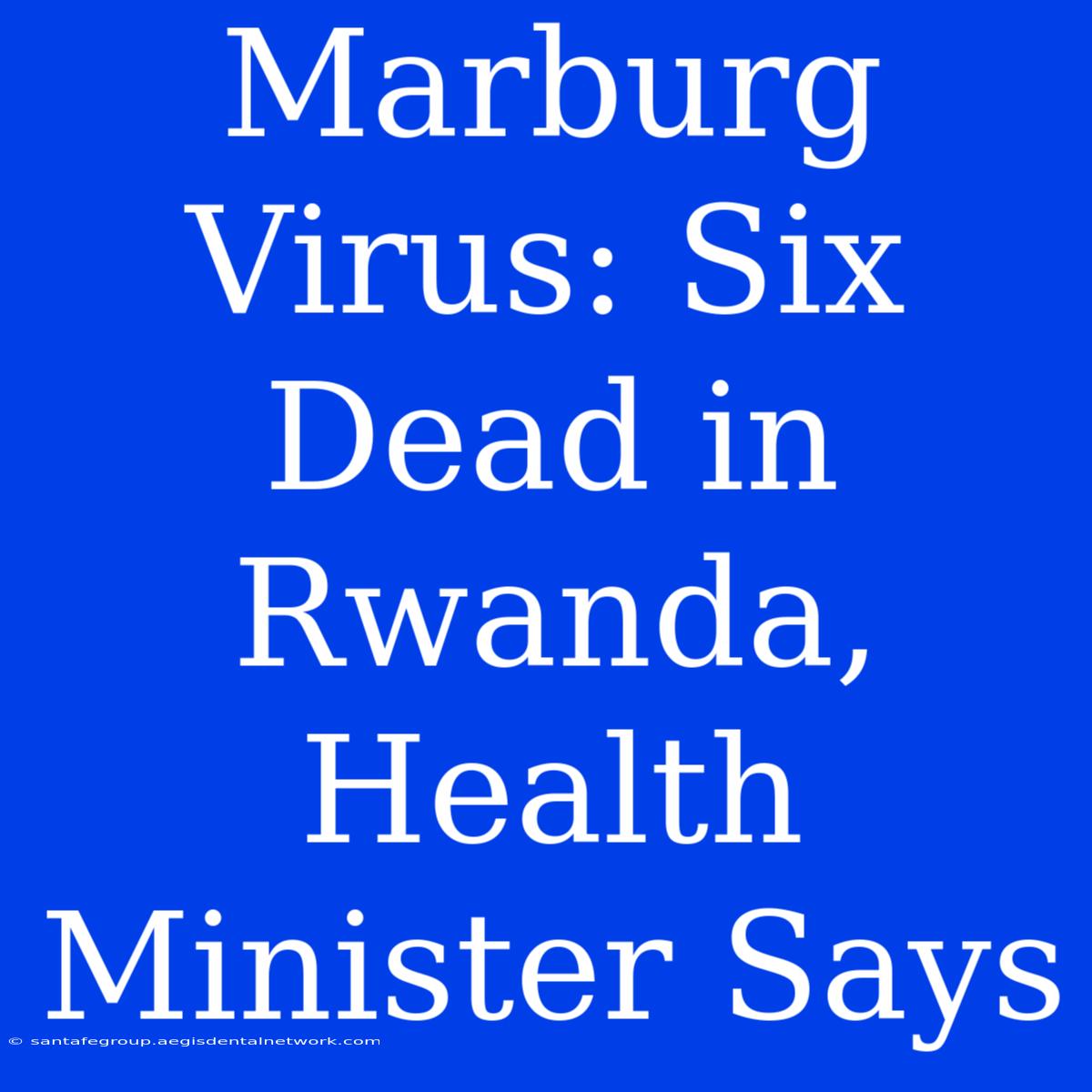Marburg Virus: Six Dead in Rwanda, Health Minister Says - A Growing Threat?
What is the Marburg virus and why is it a cause for concern? The Marburg virus, a highly contagious and deadly hemorrhagic fever, has tragically claimed the lives of six individuals in Rwanda, as announced by the country's Health Minister. This outbreak raises serious alarm bells, prompting a deeper understanding of this dangerous pathogen.
Editor's Note: This article explores the Marburg virus, its transmission, symptoms, and the importance of swift action to prevent further outbreaks.
The Marburg virus's potent threat highlights the need for immediate awareness and robust public health measures. This virus, belonging to the same family as Ebola, carries a high mortality rate, emphasizing the urgency of understanding its nature and potential impact.
Our analysis delves into the origins, spread, and consequences of the Marburg virus, offering insights into the current situation in Rwanda and potential global implications. We reviewed extensive scientific research, medical reports, and government statements to provide a comprehensive understanding of this evolving health crisis.
Key takeaways of the Marburg virus outbreak in Rwanda:
| Aspect | Details |
|---|---|
| Confirmed Cases | Six fatalities reported |
| Transmission | Through close contact with infected individuals or their bodily fluids |
| Symptoms | Fever, headache, muscle aches, vomiting, diarrhea, bleeding |
| Treatment | No specific treatment available; supportive care is crucial |
| Prevention | Early detection, contact tracing, quarantine, and strict infection control measures |
The Marburg Virus
The Marburg virus, a filovirus, is known for its rapid and severe progression. Its discovery dates back to 1967, linked to outbreaks in Marburg and Frankfurt, Germany. The virus primarily infects humans through direct contact with infected individuals or their bodily fluids.
Transmission of the Marburg Virus
- Direct Contact: Exposure to infected individuals' blood, secretions, or organs is the primary mode of transmission.
- Contact with Infected Animals: The virus is believed to originate in fruit bats and can spread to humans through contact with their bodily fluids or contaminated environments.
- Indirect Contact: Contact with contaminated materials, surfaces, or medical equipment can also lead to infection.
Symptoms of the Marburg Virus
Marburg virus infection typically manifests with a range of severe symptoms:
- Fever
- Headache
- Muscle Aches
- Nausea and Vomiting
- Diarrhea
- Bleeding (nose, gums, internal bleeding)
- Rash
- Encephalitis (inflammation of the brain)
Treatment and Prevention of the Marburg Virus
- Treatment: There is no specific antiviral treatment for Marburg virus infection. Supportive care, including hydration, blood transfusions, and management of complications, is crucial.
- Prevention: Strict infection control measures are vital, including:
- Early Detection: Identifying and isolating infected individuals promptly.
- Contact Tracing: Identifying and monitoring individuals who may have been in contact with infected persons.
- Quarantine: Isolating suspected or confirmed cases to prevent further transmission.
- Safe Burial Practices: Using protective measures during burial ceremonies.
The Importance of Response
The recent outbreak in Rwanda underscores the urgent need for global preparedness and response mechanisms for emerging infectious diseases. Early detection, swift action, and international collaboration are crucial to contain outbreaks and prevent further spread.
FAQ
Q: What is the incubation period for the Marburg virus? A: The incubation period for Marburg virus disease is typically 5 to 10 days but can range from 2 to 21 days.
Q: How is the Marburg virus diagnosed? A: Diagnosis is made through laboratory testing, including RT-PCR (reverse transcription-polymerase chain reaction) and serological tests.
Q: Is there a vaccine for the Marburg virus? A: There is no currently approved vaccine for the Marburg virus. However, several vaccine candidates are undergoing clinical trials.
Q: What is the mortality rate of the Marburg virus? **A: ** The mortality rate for Marburg virus disease can be as high as 88%, but it varies depending on the specific outbreak and the availability of supportive care.
Tips for Prevention
- Avoid contact with sick individuals or their bodily fluids.
- Use personal protective equipment when handling potentially contaminated materials.
- Wash your hands thoroughly with soap and water or use alcohol-based hand sanitizer.
- Practice safe sex, especially with individuals who may have traveled to affected regions.
- Report any suspected cases of fever, headache, or other Marburg virus symptoms to local health authorities.
Summary
The Marburg virus outbreak in Rwanda serves as a stark reminder of the ongoing threat posed by emerging infectious diseases. Prompt and decisive action, including public health measures, international collaboration, and ongoing research, are crucial to prevent further outbreaks and protect global health.
Closing Message
Understanding the Marburg virus and its potential impact is essential for preventing future outbreaks. By raising awareness, promoting responsible health practices, and fostering global cooperation, we can better protect ourselves and our communities from the threat of this deadly disease.

